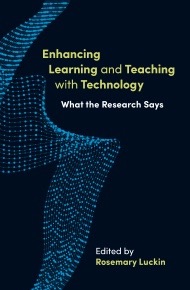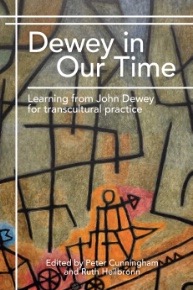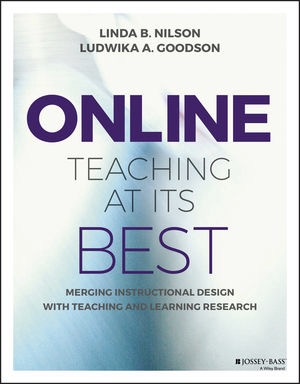learning theory
Select an item by clicking its checkbox
Date Reviewed: August 21, 2020
Online Teaching at Its Best: A Merger of Instructional Design with Teaching and Learning Research is the scholarly resource for online learning that faculty, instructional designers, and administrators have long been awaiting. Over 70 percent of degree-granting institutions offer online classes, and while technical resources abound, the courses often fall short of integrating the best practices in online pedagogy, even if they comply with online course design standards. Typically these standards omit the best practices in teaching and learning and the principles from cognitive science, leaving students struggling to keep the pace, understand the material, and fulfill their true potential as learners. This book fills the gap, providing evidence-based practices for online teaching, online course design, and online student motivation integrated with pedagogical and cognitive science to help you build the distance learning courses and programs your students deserve.
As more and more students opt for distance learning, it\'s up to designers and instructors to rethink traditional methods and learn to work more effectively within the online learning environment, and up to administrators to provide the needed leadership. Online Teaching at Its Best provides practical, real-world advice grounded in educational science to help online instructors, instructional designers, and administrators deliver an exceptional learning experience. (From the Publisher)

Enhancing Learning and Teaching with Technology: What the Research Says
Date Reviewed: September 6, 2018
Rosemary Luckin, editor
London, UK: UCL Institute of Education Press, 2018 (xxxv + 334 pages, ISBN 978-1-78277-226-2, $41.95) The overarching conclusion one might draw from this research-oriented review of current studies regarding education and technology is that we simply do not know enough about the effects of digital resources on teaching and learning. As the authors of this edited ...
Enhancing Learning and Teaching with Technology: What the Research Says
Rosemary Luckin, editor
London, UK: UCL Institute of Education Press, 2018 (xxxv + 334 pages, ISBN 978-1-78277-226-2, $41.95)
The overarching conclusion one might draw from this research-oriented review of current studies regarding education and technology is that we simply do not know enough about the effects of digital resources on teaching and learning. As the authors of this edited volume repeatedly point out, media reports about educational technology typically highlight negative findings and ignore positive associations. Technology champions and detractors rely primarily on face-value benefits or concerns in making their cases for or against educational use. Few studies have empirically considered the interplay among specific learning theories, educational contexts, embodied practices, and various technologies that might enhance learning. Without such research, we cannot draw defensible conclusions about the educational effectiveness of technology resources for formal and informal learning.
Organized in six parts – two that focus on learning factors and four related to educational challenges that might benefit from technological resourcing – the text is at times jargon heavy, particularly for readers unfamiliar with computer programming lingo or European educational policies and practices. A six-page glossary offsets some of this difficulty. Diagrams described as color-coded are printed in black and white, which complicates interpretation. Chapters are short (averaging seven or eight pages), so topics are covered succinctly with little detail to bolster analytic claims. Seven evidence-based learning principles are introduced (2-8) and referenced throughout the text, as are a list of nineteen learning approaches (see Table 2.1, 36). These frameworks serve to tie different case studies together. At the end of each section, the editor summarizes key findings in a bulleted list that can serve as a quick reference for readers.
The case studies provided focus primarily on school-age children and Science, Technology, Engineering, and Math (STEM) subjects or language development, although some chapters address adult learners. Most helpful for Reflective Teaching readers would be the discussions of video production recommendations (chapter 2.4), location-triggered learning (chapter 2.5), gaming and unintentional learning (chapter 3.1), digital access and cheating (chapter 3.2), engaging learning environments (chapter 3.3), and the use of tablets and smartphones in education (chapter 4.2). For those interested in assessment and professional development issues, the last section of the text covers learning analytics and technology-enhanced coaching for teachers. Readers in institutions experimenting with Massive Open Online Courses (MOOCs) might find the presentation of MOOC development priorities (chapter 5.2) useful as a discussion resource in policy-making conversations.
On a more general education level, the short discussion of self-testing and the value of asking students to indicate how certain or uncertain they are about their answers as a strategy to encourage self-reflection on learning (chapter 1.2) may prompt educators to consider whether right answers are sufficient measures of deep knowledge acquisition. Institutional assessment plans often seek to ascertain how well students are integrating and transferring knowledge from one context to another, which depends on deeper forms of understanding. Using this chapter to spark departmental or faculty-wide conversation about what constitutes deep, transferable knowledge could inform assessment design work as well as individual course grading schemes.

Dewey in Our Time: Learning from John Dewey for Transcultural Practice
Date Reviewed: August 11, 2017
Dewey in Our Time is a volume of collected essays that provides an overview of Deweyan scholarship since the original publication of John Dewey’s Democracy and Education in 1916. Recognizing the continuing influence of Dewey’s works, the Philosophy of Education Society of Great Britain and the History of Education Society, UK invited scholars of education, philosophy, history, educational policy, and cultural studies to contribute to this volume.
The volume is composed of an introduction and two main parts. In Part I, “Dewey in Changing Cultural Contexts,” the authors critically reinterpret Dewey’s wisdom and apply it to the educational contexts of Finland, Singapore, Spain, Japan, the UK, Australia, and the US. The diverse essays in this section engage with Dewey’s work on a philosophical level while also accounting for the histories that affect its reception in different national contexts. Taken together, the perspectives of authors from a variety of disciplines shed important light on the ways “science and epistemology, religion and politics” interact in the domain of education (3).
Part 2 is titled “Dewey, Pedagogy, and Practice in Our Time.” “Our time” here refers to the first decades of the twenty-first century, seen in relation to and even under the shadow of the past and future. Hence, Part 2 treats the world in which teachers and educators work, live, and research as a space in constant flux. Each contributor to this section discusses Dewey’s relevance to a particular challenge in contemporary education. The essays make connections between “educative experience and experimentation; experience and moral judgment; doubt, difficulty, and struggle; and … action research” (4). Part 2 concludes with a call to replace current models of “citizenship education” with Dewey’s “democratic education.”
The most valuable aspect of this book is the discussion of the wide range of Deweyan influences on contemporary education. For example, in Chapter 6, Javier Sáenz Obregón maintains that Dewey’s concept of educational experience has influenced contemporary education in terms of “self-reflection and self-creation” (96). Arguing that teachers, like students, are the “subjects of educational experience,” Obregón asserts that we must learn to apply to teachers the same aspirations we have for students (96). In particular, pedagogical practices should promote “inter-subjective transformation” for teachers and students alike (96). Andres English argues in Chapter 8 that Dewey’s concept of “struggle in learning” has influenced definitions of learning and of learning’s beginning point in contemporary education. Connecting Dewey’s concept of learning to historical and contemporary concepts of philosophical education (Plato, Rousseau, and J.F. Herbart), English distinguishes between productive and destructive forms of struggle and discusses how these conceptual distinctions can inform educational practice, based on the idea of the “in-between of learning” (129) – a condition of being beyond ignorance but not yet in possession of full knowledge. This condition is uncomfortable and difficult, but it offers rich possibilities for reflective thinking.
Overall, Dewey in Our Time successfully demonstrates Dewey’s ongoing legacy in educational practice, policy making, and curriculum development and illuminates the ongoing Dewey-inspired research on historical and philosophical education. Teachers and educators will greatly benefit from this volume when undertaking the daunting task of pedagogical reconstruction in the face of changing realities. Researchers will gain deeper insight into the historical and philosophical underpinnings behind educational practice.

Play in Creative Problem-solving for Planners and Architects
Date Reviewed: July 11, 2017
As the title indicates, this book is intended for those in the fields of urban planning and architecture. That said, with some translation, this slim volume is a helpful resource for those who seek to include more creative pedagogy in their theological and religious studies classrooms. I can imagine theology and religious studies professors using this book to inspire their own use of play in the classroom and to persuade skeptical colleagues of the value of play within the academy.
Author Ron Kasprisin defines and defends the role of play in teaching and learning with passion and precision. Rooting his concept of play in the pedagogical theories of Friedrich Froebel (founder of the German kindergarten movement), Kasprisin describes play as “ self-activity, enjoyable, sensory, wondrous, and thoughtful” (4). Play is “experimental, flexible” (60), and dedicated to “creative problem-solving” that “requires openness . . . divergent thinking, and an appreciation for ambiguity and complexity” (62). He extols its power to unlock creativity thanks to how it “disables fear, failure, and creates voluntary intentions” (7).
Kaspirin’s consideration of how play overcomes fear and unleashes creativity (in Chapter Two, “Object Learning through Symbolic Play” [35-38 in particular]) could stimulate new directions in how faculty promote critical thinking within students and how to encourage and absorb diverse perspectives within class discussions. Similarly, his exploration of how the studio environment nurtures play and its attendant creativity (Chapter 5, “Setting the Stage-Play Environment”) offers fresh ways to create classrooms with a high tolerance for failure and consequent high innovation. Key throughout is Kasprisin’s conviction that play offers a legitimate method of student-directed learning at all levels of education.
The final four chapters (“How Do Designers Play,” “Object-learning with Play-tools/Skills,” “Object-learning Applications in Design and Planning,” and “Integration of Digital Technologies and Crafting Processes”) are the ones most closely written for those who teach students of urban planning and architecture. A careful reading of the Introduction, first three chapters (“Creative Problem-solving (CPS) for Design and Planning,” “Object-learning through Play: Object-learning, Constructivism, and Self-learning through Symbolic Play,” and “The Gifts of Friedrich Froebel”) and Chapter 5 (“Setting the Stage – Play Environment”) is likely to suffice for professors in other fields. In those chapters, Kasprisin lays out the qualities and functions of play and the value of creative problem-solving in education. His insistence that technological methods short-circuit creativity is of special interest to me. As one who resists the encroachment of technology at every level of education, I found his discussions of the limits of technology illuminating and affirming.
I was surprised that the theories of Maria Montessori were not mentioned as her theories of early childhood education have also taken strong hold in a segment of American education. Influenced by Froebel, Montessori embraced a similar ethic of sensory learning and offers a range of materials for children to engage that is wider than Froebel’s. If you are persuaded by the value of play, her thought will provide additional resources for consideration.

Learning, Development and Education: From Learning Theory to Education and Practice
Date Reviewed: January 30, 2017
There can be no question that understanding (implicit or explicit) learning theory undergirds effective teaching. This is especially true when instructional topics become confusing or diverge from the common experience of students. Many of the topics students encounter as they study theology and religion fall into this category, and it is for this reason that the collection of Knud Illeris’s works, Learning, Development and Education, has value for teachers of theology and religion.
Illeris has spent his career figuring out how learning works and determining how to create authentic, transformative learning experiences. This collection of essays demonstrates the way in which Illeris’s theories developed over time, and shows the breadth of topics that come to bear on the understanding of student learning. Illeris categorizes his selected works into five parts, containing essays that were originally published between the late 1990s and 2015. Some of the essays have not previously appeared in English. The first two sections have the most bearing on the teaching of theology and religion, so they will be the focus of this review.
The three essays in Part One succinctly describe Illeris’s comprehensive theory of learning, articulated more fully in his 2007 monograph How We Learn (New York: Routledge). In brief, Illeris argues that learning has two fundamental processes and three dimensions. The processes are “an external interaction process between the learner and his or her social, cultural, or material environment, and an internal psychological process of elaboration and acquisition” (10). Illeris also identifies three dimensions of learning: the content dimension deals with the material being learned, the incentive dimension considers the motivation and energy necessary for learning, and the interaction dimension categorizes dispositions that provide the genesis of learning. Illeris further identifies several barriers to learning (15-17) after recognizing that education is rife with “non-learning and mislearning” (15).
According to Illeris, there are four types of learning: cumulative, assimilative, accommodative, and significant/transformational learning. Each of these types of learning is connected to a phase in psycho-social development in Part Two, where Illeris lays out his understanding of lifelong learning (48-55) and gives extended treatment to the function of learning at the youth and adult stages. He argues that education during the phase of youth is typified by a quest for what he calls “self-orientation,” which means the “process where one orients oneself with a view to finding oneself, one’s options, ways of functioning, and preferences” (69). In his view, all educational experiences (inside and outside of the classroom) contribute to and are undergirded by the youth’s quest for self-orientation. The situation is different with adult learners, who have already found their orientation, and so accept responsibility for their actions and their learning. In Illeris’ estimation, this different approach to learning requires different foundations for adult education.
Part Three, “Special Learning Issues,” is a compilation of chapters that do not fit in the other sections but provide a theoretical grounding for the arguments Illeris makes in parts one and two. Part Four, “Various Approaches to Education,” includes the oldest of the selected articles, and describes how some of Illeris’s theories were put into practice at Danish universities in the 1970s. The final part concerns learning in working life. Here Illeris applies his comprehensive theory of learning (articulated in Part One) to the workplace.
While there is certainly room for criticism of Illeris’s understanding of learning, and in particular, his connections of types of learning with phases of psycho-social development, Illeris’s comprehensive theory of learning is helpful as a foundation for effective theological education. Three observations, in particular, deserve mention. First, his contention that learning is not merely knowledge transfer, or skills acquisition, but includes a variety of psychological, biological, and social factors is worth keeping in mind as we construct learning experiences for our students. Second, Illeris’s observation that youth and adults have a different foundation for learning is significant, especially as there are now more adults students enrolling in college than ever. Finally, it is incredibly important to consider the various barriers students face as they try to learn. While it is certainly the case that students are responsible for their education, Illeris is right to argue that teachers both create and tear down barriers.
